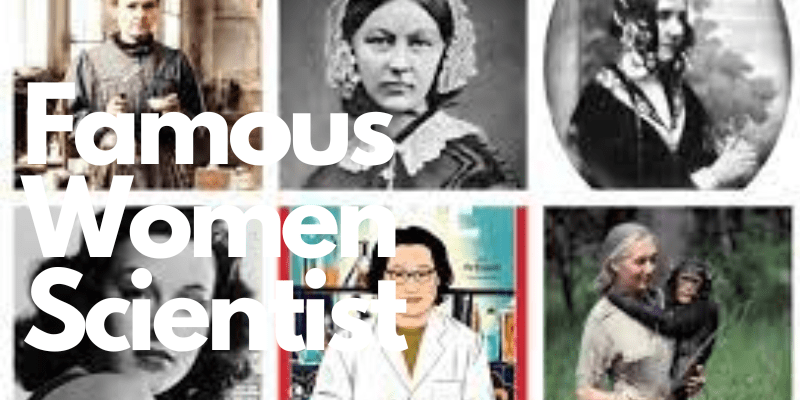The contributions of women have frequently been overlooked in the annals of scientific history, but a closer examination reveals a group of remarkable people who broke with tradition and left a lasting impression on their respective fields. This collection of 10 famous female scientists showcases the breadth and depth of their achievements, spanning disciplines such as physics, chemistry, biology, and computer science. From the pioneering work of Marie Curie, the first woman to win Nobel Prizes in two scientific fields, to the groundbreaking insights of Jane Goodall into primate behavior, these women shattered barriers, challenged norms, and fundamentally altered our understanding of the natural world.
10 Famous Women Scientists and Their Contributions
1. Marie Curie (1867-1934)
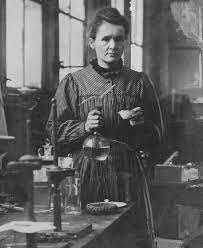
Marie Curie, born on November 7, 1867, in Warsaw, Poland, and named Marie Skłodowska at birth, was a pioneering physicist and chemist. She is well known for her innovative studies on radioactivity, for which she was awarded two Nobel Prizes in separate scientific domains.
Contributions to Medicine: During World War I, Marie Curie’s knowledge of radiology was instrumental in developing mobile radiography units, which provided X-rays for medical diagnostics on the front lines.
2. Rosalind Franklin (1920-1958)

Rosalind Franklin (1920-1958) was a British biophysicist and X-ray crystallographer who made significant contributions to the understanding of the molecular structures of DNA, RNA, viruses, coal, and graphite. She made a significant contribution, but she deserved more credit during her lifetime.
Contribution to DNA Double Helix Discovery: Franklin’s research was pivotal in discovering the DNA double helix structure. Her research produced crucial information that Francis Crick and James Watson used to create their well-known DNA molecule model in 1953.
3. Barbara McClintock (1902-1992)
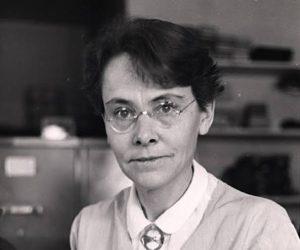 Barbara McClintock (1902-1992) was an American geneticist and cytogeneticist who made groundbreaking contributions to the field of genetics, particularly in the understanding of transposons or “jumping genes.” She was awarded the 1983 Nobel Prize in Physiology or Medicine for her work, which established the groundwork for future developments in molecular genetics.
Barbara McClintock (1902-1992) was an American geneticist and cytogeneticist who made groundbreaking contributions to the field of genetics, particularly in the understanding of transposons or “jumping genes.” She was awarded the 1983 Nobel Prize in Physiology or Medicine for her work, which established the groundwork for future developments in molecular genetics.
Contribution to Genetics: McClintock’s work revolutionized the understanding of genetic regulation and variability. Transposons were later found in various organisms, and their importance in evolution and genetic diversity became widely recognized. Her work shaped later generations of geneticists and established the foundation for molecular genetics.
4. Jane Goodall (b. 1934)
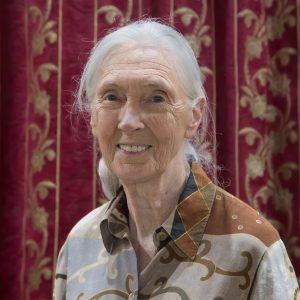 Jane Goodall, born on April 3, 1934, in London, England, is a renowned primatologist, ethologist, and anthropologist best known for her groundbreaking work with wild chimpanzees in Tanzania. Her research revolutionized our understanding of primates and challenged the traditional scientific views on the relationship between humans and animals.
Jane Goodall, born on April 3, 1934, in London, England, is a renowned primatologist, ethologist, and anthropologist best known for her groundbreaking work with wild chimpanzees in Tanzania. Her research revolutionized our understanding of primates and challenged the traditional scientific views on the relationship between humans and animals.
Contribution to Genetics: Jane Goodall’s contributions to primatology and wildlife conservation are unparalleled. In the early 1960s, she embarked on a groundbreaking journey to Gombe Stream National Park in Tanzania, where she conducted a landmark study on wild chimpanzees. Goodall’s meticulous observations revealed these primates’ complex social structures, emotional range, and tool-making abilities, challenging established scientific notions about the exclusive nature of certain behaviors to humans.
5. Dorothy Crowfoot Hodgkin (1910-1994)
 Dorothy Mary Crowfoot Hodgkin (1910-1994) was a British chemist and X-ray crystallographer who made groundbreaking contributions to structural biology. Her work on the structure of important biochemical substances, particularly the determination of the three-dimensional structures of complex molecules using X-ray crystallography, earned her the Nobel Prize in Chemistry in 1964.
Dorothy Mary Crowfoot Hodgkin (1910-1994) was a British chemist and X-ray crystallographer who made groundbreaking contributions to structural biology. Her work on the structure of important biochemical substances, particularly the determination of the three-dimensional structures of complex molecules using X-ray crystallography, earned her the Nobel Prize in Chemistry in 1964.
Contributions to Crystallography: Hodgkin made significant contributions to the development of X-ray crystallography, a powerful technique for determining a crystal’s atomic and molecular structure. Her methodological and technical innovations were essential to accomplishing her structural studies.
6. Chien-Shiung Wu (1912-1997)
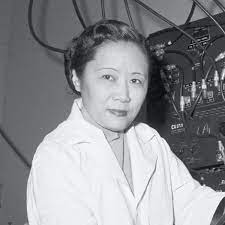 Chien-Shiung Wu (1912–1997) was a Chinese-American experimental physicist who significantly contributed to nuclear physics and experimental particle physics. Born on May 31, 1912, in Shanghai, China, she became one of the most prominent experimental physicists of her time.
Chien-Shiung Wu (1912–1997) was a Chinese-American experimental physicist who significantly contributed to nuclear physics and experimental particle physics. Born on May 31, 1912, in Shanghai, China, she became one of the most prominent experimental physicists of her time.
Contributions: Chien-Shiung Wu made indelible contributions to the field of physics, leaving an enduring impact on experimental nuclear physics and the broader scientific community. Her crucial contribution to the Manhattan Project during World War II proved her early skill and dedication to the advancement of science. Still, her legacy was cemented by the ground-breaking “Wu experiment” of 1956, which she carried out with Tsung-Dao Lee and Chen-Ning Yang.
7. Ada Lovelace (1815-1852)
 Ada Lovelace (1815-1852) was a mathematician and writer best known for her work on Charles Babbage’s early mechanical general-purpose computer, the Analytical Engine. She is frequently credited with being the first person to program a computer because she saw the machine’s potential to be used for more complicated tasks than just basic calculations.
Ada Lovelace (1815-1852) was a mathematician and writer best known for her work on Charles Babbage’s early mechanical general-purpose computer, the Analytical Engine. She is frequently credited with being the first person to program a computer because she saw the machine’s potential to be used for more complicated tasks than just basic calculations.
Contributions: Being the first person to program a computer, Ada Lovelace’s revolutionary contribution stems from her visionary understanding of the possibilities of Charles Babbage’s Analytical Engine. In the mid-19th century, when the concept of a general-purpose computer was in its infancy, Lovelace foresaw the machine’s capacity to extend beyond mere numerical calculations. Her translation of Luigi Federico Menabrea’s article about the Analytical Engine, enriched with her extensive notes and annotations, demonstrated her deep understanding of the engine’s capabilities.
8. Grace Hopper (1906-1992)
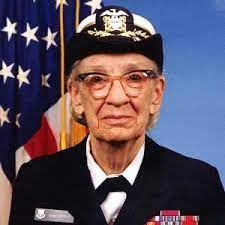 Grace Hopper (1906–1992) was a pioneering American computer scientist and United States Navy rear admiral. Hopper, the “Queen of Code” and the “Mother of COBOL,” made important advances in early computing and programming languages.
Grace Hopper (1906–1992) was a pioneering American computer scientist and United States Navy rear admiral. Hopper, the “Queen of Code” and the “Mother of COBOL,” made important advances in early computing and programming languages.
Contributions: Grace Hopper made unparalleled contributions to computer science, leaving an indelible mark on developing early computers and programming languages. As a pioneering mathematician and computer scientist, Hopper’s influence spanned from her work on the Harvard Mark I during World War II to her leadership in developing the first commercially produced computer, the UNIVAC I. Her most famous contribution is developing the business application-focused programming language COBOL, which became a popular and significant language.
9. Rachel Carson (1907-1964)
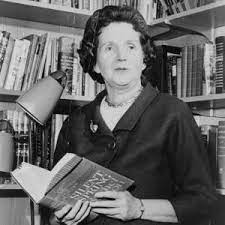 Rachel Carson (1907–1964) was an American marine biologist, conservationist, and author who played a pivotal role in the early environmental movement. Her groundbreaking work, especially her book “Silent Spring,” profoundly impacted public awareness of environmental issues, particularly the dangers of widespread pesticide use.
Rachel Carson (1907–1964) was an American marine biologist, conservationist, and author who played a pivotal role in the early environmental movement. Her groundbreaking work, especially her book “Silent Spring,” profoundly impacted public awareness of environmental issues, particularly the dangers of widespread pesticide use.
Contributions: Rachel Carson’s enduring contribution to environmental awareness and conservation lies in her groundbreaking book, “Silent Spring.” Published in 1962, the book exposed the environmental hazards of widespread pesticide use, particularly DDT, and served as a catalyst for the modern environmental movement. Carson’s well-researched and beautifully written work emphasized how ecosystems are delicately balanced and how all living things are interconnected.
10. Rita Levi-Montalcini (1909-2012)
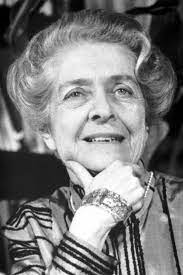 Rita Levi-Montalcini (1909–2012) was an Italian neuroscientist who significantly contributed to developmental biology and neurology. She was awarded the Nobel Prize in Physiology or Medicine in 1986, jointly with Stanley Cohen, for discovering nerve growth factor (NGF) and epidermal growth factor (EGF).
Rita Levi-Montalcini (1909–2012) was an Italian neuroscientist who significantly contributed to developmental biology and neurology. She was awarded the Nobel Prize in Physiology or Medicine in 1986, jointly with Stanley Cohen, for discovering nerve growth factor (NGF) and epidermal growth factor (EGF).
Contributions: Rita Levi-Montalcini’s ground-breaking discoveries of nerve growth factor (NGF) and her work with Stanley Cohen to isolate epidermal growth factor (EGF) are emblematic of her contributions to developmental biology and neuroscience. Her seminal work, which earned her the Nobel Prize in Physiology or Medicine in 1986, revealed the critical role of these growth factors in the development, maintenance, and survival of nerve cells.
Conclusion
All these women have left an indelible mark on their respective fields. Their achievements span a range of disciplines, from chemistry and genetics to primatology and computer science. These scientists persisted in the face of social and gender barriers, expanding our knowledge of the natural world, influencing technological advancements, and motivating the next generations. Beyond their successes, their legacies highlight the value of diversity and inclusivity in the scientific community and advance the field of science. These women have enriched the field of scientific discovery with their collective influence and serve as role models, demonstrating that passion, perseverance, and intellect are not gender-specific.
People are also reading:

